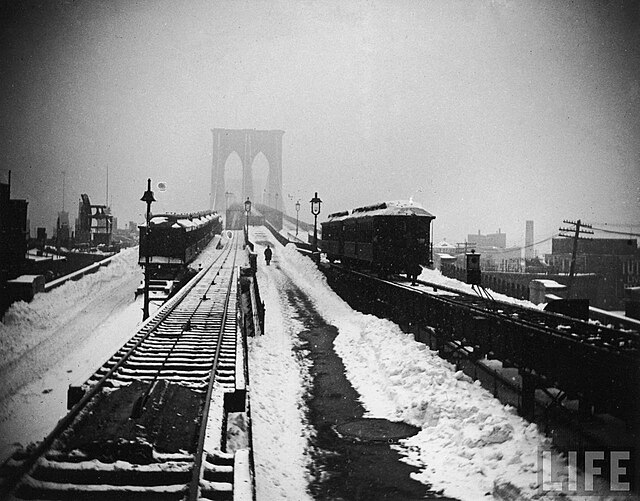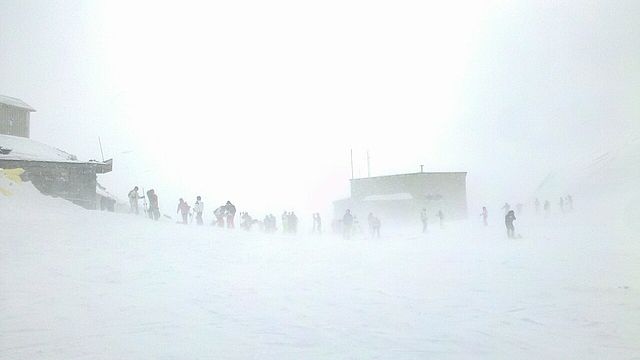The Great Blizzard of 1888, also known as the Great Blizzard of '88 or the Great White Hurricane, was one of the most severe recorded blizzards in American history. The storm paralyzed the East Coast from the Chesapeake Bay to Maine, as well as the Atlantic provinces of Canada. Snow fell from 10 to 58 inches in parts of New Jersey, New York, Massachusetts, Rhode Island, and Connecticut, and sustained winds of more than 45 miles per hour (72 km/h) produced snowdrifts in excess of 50 feet (15 m). Railroads were shut down and people were confined to their homes for up to a week. Railway and telegraph lines were disabled, and this provided the impetus to move these pieces of infrastructure underground. Emergency services were also affected during this blizzard.
Streets in New York City as the storm hit. Many overhead wires broke and presented a hazard to city dwellers.
Brooklyn Bridge during the blizzard
45th Street and Grand Central Depot, Manhattan, March 12
Park Place in Brooklyn, March 14
A blizzard is a severe snowstorm characterized by strong sustained winds and low visibility, lasting for a prolonged period of time—typically at least three or four hours. A ground blizzard is a weather condition where snow is not falling but loose snow on the ground is lifted and blown by strong winds. Blizzards can have an immense size and usually stretch to hundreds or thousands of kilometres.
Heavy snow during the January 2016 United States blizzard.
Blizzard at the Tochal Skiing resort, Tehran and affected skiers.
A late night heavy blizzard in Ontario, Canada.
Drifted snow near Burrow-with-Burrow, Lancashire, England, January 1963








